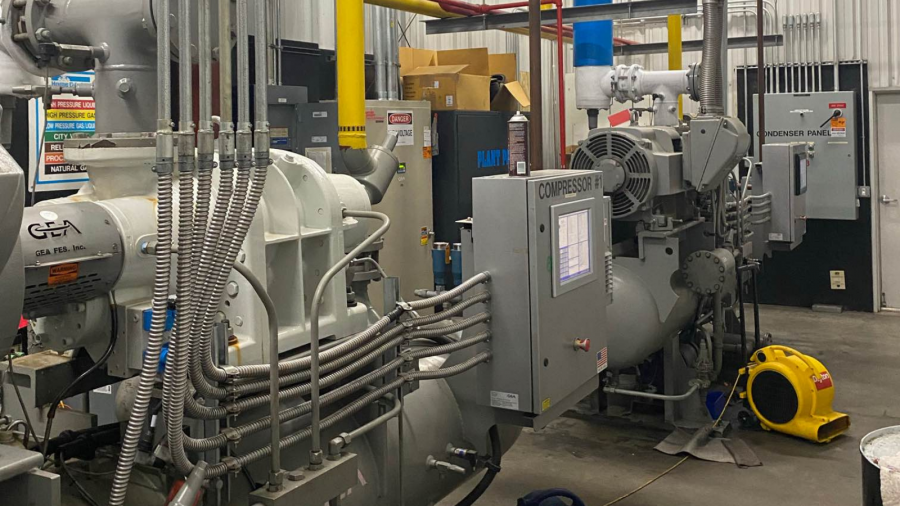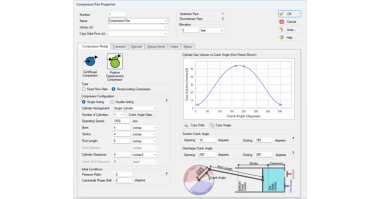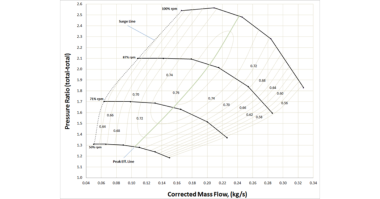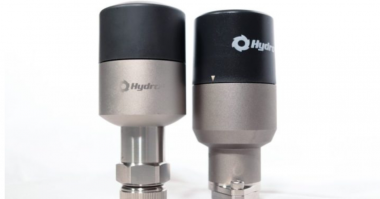During a conversation with some of my peers, the subject was brought up about oil loss in screw compressors. The opinion was expressed that the oil charge on a screw compressor would need to be “topped off” every few months and that this was common maintenance among refrigeration facilities. As a result of that conversation, I’ve decided to express my personal opinion on the subject of oil loss in screw compressors.
Throughout my years in service and facility operations in the industrial refrigeration field, I’ve heard many opinions on oil loss/migration. Lots of operators believe that replenishing your oil charge is something that occurs on a regular basis. In my opinion, this is a misconception and almost always leads back to technicians that are used to (or trained by someone that was used to) the “Vilter” or “Fuller” days. We’ve all been there. These compressors bypassed large amounts of oil on an annual basis. It was the “Nature of the Beast” so to speak. Then we started to see the twin rotary screw compressor. Huge compressors that were more efficient with large separators on them. With all the extra training that came along with these machines (or lack thereof depending on your employer), one thing that was never truly focused on was oil usage and coalescing filter efficiency.
So, the fact of the matter is, coalescing filters are extremely efficient if installed correctly. I’ve had compressors go years without needing oil added to the machine. Some data that I have found suggests that they only pass a couple of tablespoons of oil on an annual basis (depending on the efficiency of the filter). A lot of gradual oil loss issues that I have seen boils down to one thing typically, incorrect installation of coalescing filters. One manufacturer in particular is the most susceptible when it comes to this issue. They are notorious for passing oil from day one. The reason for this is because, unlike their competitors they have not installed guide bars to easily align the filters during installation. Now can you imagine during startup having 20 or more of these filters to install? They probably weigh around 25 lbs. on average! Now imagine, kneeling, one arm extended into the separator (because the other one has to be free to install the nut) bearing all the weight of this coalescing filter in the palm of your hand, and then moving it up and down to insure that it is sitting flush against the back wall. It’s exhausting! If you’ve ever been in weight class and did a common exercise called pyramids, you would know how this feels. You can see huge guys struggle to lift a 45 lb. weight bench bar due to the repetitions. It’s the same thing. Now don’t get me wrong, I am partial to that brand of compressors. They are dependable, great, long lasting machines. Their coalescing filters are great also. The only issue is the means to install them are not quite as good as some of their competitors. And this doesn’t mean that the other makes are not susceptible to the same issue, I’ve just noticed it more with this particular brand and that’s my unbiased opinion.
Some of the other issues that cause gradual oil loss can be that your oil return valve is not opened enough. The amount of oil “smoke” that is passed between coalescing filters will change depending on load and velocities. Due to this fact, you could see an increase in oil collecting in the coalescing side of your separator. I’ve actually had this issue several times and the fix is just a small adjustment to your oil return valve. Another common issue that I’ve seen is the fact that a lot of people overfill compressors during oil changes or “top offs”. Frick’s recommendation is to run the operating level between the two sight glasses. That means that during an oil change or “top off”, you should run the oil until you just see it come into the top sight glass. What this will prevent is the spilling over of the oil into the cavity that is between the oil separator and the coalescing filter wall. This is also a common way to shorten the life of the coalescing filters. As we all know, any liquid that goes into a coalescing filter potentially can damage them or “blow them out” depending on the amount. So if you are filling up your separator every month or two and you are filling it up to the top of the sight glass, after a couple of times, you could be pushing oil into the coalescers.
In closing, I obviously didn’t discuss all the ways you can lose oil. I wanted to focus on a few issues that I’ve seen throughout my career that is something I consider common misconceptions about gradual oil loss in screw compressor packages. If you have any questions regarding this article, please message me through LinkedIn. This article is strictly my opinion and is based off of my personal experience in the field (and quite a few hours of research and training). I’ve copied a list from Gartner refrigeration to give a complete list of oil loss issues and pasted it below for everyone’s reference also.
Sudden oil loss through the suction port:
- Suction check not holding will cause the compressor to back spin. Oil travels up suction line and dumps into the system. > Watch for coupling rotating backwards > Repair check valve.
- Suction check valve by-pass line is opened too far.
Continuous oil loss through the economizer port:
- This is commonly caused by the economizer check valve not holding. Oil can end up migrating from one compressor to another. Repair the check valve or consider replacing it with a piston style check valve.
Continuous oil loss through the discharge port:
- The coalescing elements are the most likely cause of this. Oil ends up going to the condensers, and is carried back through the rest of the system. > Faulty / worn coalescing elements; replace coalescers > Coalescing elements may be loose; not installed correctly > Bulkhead is a blank plate; check gasket for leaks.
- Oil can also be the problem with discharge port loss. > If the oil is foaming, then the oil can be carried out in foam > Wrong type of oil being used > Different types of oil getting mixed in the compressor > Liquid injection not set properly > Oil charge maintained too high; lower the oil level.
Operating conditions can cause continuous or sudden loss of oil:
- Differential pressure too low causing high velocity across the separator.
- Discharge pressure is lower than original design, causing vapor velocity in the separator to be too high.
- Sudden drop in discharge pressure can cause oil foaming.
- Liquid carry over or slugging fouling the coalescing filters. Coalescing oil return to compressor not functioning. > Valve closed > Valve or line plugged.
About the Author: Joshua Rees is an industrial refrigeration technician, father of 6 beautiful children and a husband to his beautiful wife Jessica. Joshua has been in the industry since 16 and enjoys his career in the commercial HVAC/R industry




